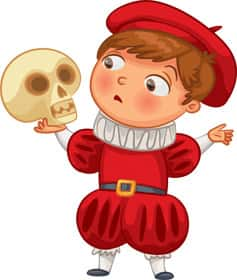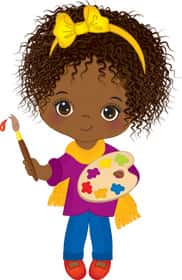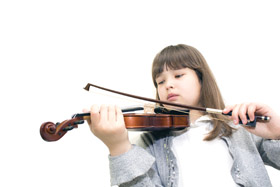 “Imagination is more important than knowledge. For knowledge is limited, whereas imagination embraces the entire world, stimulating progress, giving birth to evolution.”—Albert Einstein
“Imagination is more important than knowledge. For knowledge is limited, whereas imagination embraces the entire world, stimulating progress, giving birth to evolution.”—Albert Einstein
Academics & Arts
In recent years, art programs have been cut from school curriculums, including music, art and theater. While the arts are fun for both kids and young adults, they’re also a fundamental resource for overall development. Here are a few ways the arts help youth learn and grow:
Improved academic performance. The arts don’t just develop a child’s creativity—the skills they learn from art often spills over into academic achievement. According a report by Americans for the Arts released in 2017, states that young people who participate regularly in the arts (three hours a day, three days a week for a full year) are four times more likely to be recognized for academic achievement, to participate in a math and science fair or to win an award for writing an essay or poem than children who don’t participate.
 Decision making. The arts strengthen problem solving and critical thinking skills. How do I express this feeling through my dance? How should I play this character? Learning how to make choices and decisions carry over into education and other parts of life—a valuable skill in adulthood.
Decision making. The arts strengthen problem solving and critical thinking skills. How do I express this feeling through my dance? How should I play this character? Learning how to make choices and decisions carry over into education and other parts of life—a valuable skill in adulthood.
Collaboration. Many of the arts such as band, choir, and theater require students to work together. They must share responsibility and compromise to achieve their common goal. Kids learn that their contribution to the group is integral to its success.
Focus. As you persevere through painting or singing or learning a part in a play, focus is imperative. And certainly focus is vital for studying and learning in class as well as doing a job later in life.
www.learningliftoff.com
Upcoming Cuts
Statewide funding for numerous programs such as after school programs and student loan programs is projected to potentially cut $9 billion under a new federal budget. A downsize of more than 13 percent (from $68 billion to $59 billion) from the U.S. Department of Education would affect K-12 and higher education programs nationally.
The budget would seek to eliminate $3.6 trillion in total federal spending in the next decade. But the plan allocates $1.4 billion for “school choice” initiatives, including an extra $150 million above the current $333 million, to help start charter schools as well as expand existing high quality charter schools.
www.edsource.org
Granting Wishes
 A sigh of relief for those seeking financial assistance in art education—Creative Sonoma and Community Foundation Sonoma County partnered together to offer grants to students in the county who may have limited access to arts training.
A sigh of relief for those seeking financial assistance in art education—Creative Sonoma and Community Foundation Sonoma County partnered together to offer grants to students in the county who may have limited access to arts training.
“The arts have the power to teach our youth people skills beyond the creation of art itself,” says James Gore, chair of the Board of Supervisors, in a prepared statement. “Programs that will be funded through these grants can help our young community members build their ability to think critically and be creative problem solvers.”
Assuring all of Sonoma County’s youth receives the opportunity to advance in artistic endeavors and the educational and character-building benefits that the arts enhance, grants are available to nonprofit organizations that provide students from ages 2-18, with opportunities to be part of the arts learning programs throughout the community.
Elizabeth Brown, chief executive officer of Community Foundation Sonoma County, says the grants are specifically directed to provide arts opportunities to students countywide, who may not have had access outside the program.
For more information, visit creativesonoma.org/grants.




